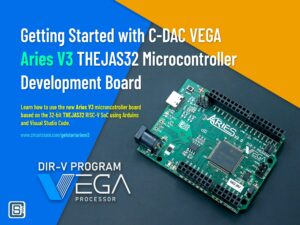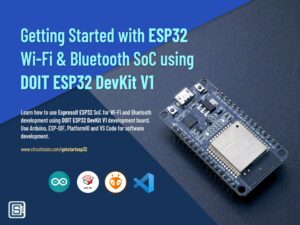Portenta H7 Lite is A Stripped Down Version of Arduino Pro’s Flagship Industrial Controller Board
Arduino Pro adds a new choice to their industrial development board family called Portenta H7 Lite. As you may have assumed, the new addition is not a completely new board but a stripped down version of their existing flagship, the Portenta H7 high performance industrial board based on ST Microelectronics STM32H747 dual-core ARM processor. Arduino says the new release is to give the developers a more flexible and affordable solution for applications that do not require advanced connectivity features. What stands out is that the Lite board leaves some of the ICs unsoldered, instead of a new board design without them. But if you look closer, you can see that the H7 Lite’s PCB is a little different from the H7 version. We are not sure if it is possible to populate the unfitted footprints with components so that you can add the missing features. On the other hand, less features means the H7 Lite is now more affordable with a price difference of $31. Let’s look at the specs and differences of both.
Portenta H7 Lite Specifications
- ST STM32H747XI Processor
- Dual core
- Arm® Cortex®-M7 core at up to 480 MHz with double-precision FPU and 16K data + 16K instruction L1 cache
- Arm® 32-bit Cortex®-M4 core at up to 240 MHz with FPU, Adaptive real-time accelerator (ART Accelerator™)
- 2 Mbytes of Flash memory with read-while-write support + 1 Mbyte of RAM
- Dual mode Quad-SPI memory interface running up to 133 MHz
- CRC calculation unit
- Security
- ROP, PC-ROP, active tamper
- 3 separate power domains which can be independently clock-gated or switched off:
- D1: high-performance capabilities
- D2: communication peripherals and timers
- D3: reset/clock control/power management
- Voltage scaling in Run and Stop mode (6 configurable ranges)
- 2.95 μA in Standby mode (Backup SRAM OFF, RTC/LSE ON)
- 4 DMA controllers to unload the CPU
- 1× high-speed master direct memory access controller (MDMA) with linked list support
- 2× dual-port DMAs with FIFO
- 1× basic DMA with request router capabilities
- Up to 35 communication peripherals
- 4× USARTs/4x UARTs (ISO7816 interface, LIN, IrDA, up to 12.5 Mbit/s) and 1x LPUART
- 6× SPIs, 3 with muxed duplex I2S audio class accuracy via internal audio PLL or external clock, 1x I2S in LP domain (up to 150 MHz)
- 4x SAIs (serial audio interface)
- SPDIFRX interface
- SWPMI single-wire protocol master I/F
- MDIO Peripheral interface
- 2× SD/SDIO/MMC interfaces (up to 125 MHz)
- 2× CAN controllers: 2 with CAN FD, 1 with time-triggered CAN (TT-CAN)
- 2× USB OTG interfaces (1FS, 1HS/FS) crystal-less solution with LPM and BCD
- Ethernet MAC interface with DMA controller
- 8-bit camera interface (up to 80 MHz)
- 11 analog peripherals
- 3× ADCs with 16-bit max. resolution (up to 36 channels, up to 3.6 MSPS)
- 1× temperature sensor
- 2× 12-bit D/A converters (1 MHz)
- 2× ultra-low-power comparators
- 2× operational amplifiers (7.3 MHz bandwidth)
- 1× digital filters for sigma delta modulator (DFSDM) with 8 channels/4 filters
- Graphics
- MIPI DSI host including an MIPI D-PHY to interface with low-pin count large displays
- Chrom-ART graphical hardware Accelerator™ (DMA2D) to reduce CPU load
- Hardware JPEG Codec
- Up to 22 timers and watchdogs
- 1× high-resolution timer (2.1 ns max resolution)
- 2× 32-bit timers with up to 4 IC/OC/PWM or pulse counter and quadrature (incremental) encoder input (up to 240 MHz)
- 2× 16-bit advanced motor control timers (up to 240 MHz)
- 10× 16-bit general-purpose timers (up to 240 MHz)
- 5× 16-bit low-power timers (up to 240 MHz)
- 4× watchdogs (independent and window)
- 2× SysTick timers
- RTC with sub-second accuracy and hardware calendar
- True random number generators (3 oscillators each)
- 96-bit unique ID
- Dual core
- External Memories
- Up to 64 MByte SDRAM (optional)
- Up to 128 MByte QSPI Flash (optional)
- High Density connectors
- 1x 10/100 Ethernet with PHY
- 1x CAN
- 4x UART (2 with flow control)
- 3x I2C
- 1x SDCard
- 1x SPI
- 1x I2S
- 1x PDM input
- 2 lane MIPI DSI output
- 8 bit parallel camera interface
- 10x PWM outputs
- 7x GPIO
- 8x ADC inputs with separate VREF
- Microchip ATECC608 Crypto (optional)
- Protected storage for up to 16 Keys, certificates or data
- Hardware support for asymmetric sign, verify, key agreement – ECDSA: FIPS186-3 Elliptic Curve Digital Signature
- ECDH: FIPS SP800-56A Elliptic Curve Diffie-Hellman
- NIST standard P256 elliptic curve support
- Hardware support for symmetric algorithms
- SHA-256 & HMAC hash including off-chip context save/restore
- AES-128: encrypt/decrypt, galois field multiply for GCM
- Networking key management support
- Turnkey PRF/HKDF calculation for TLS 1.2 & 1.3
- Ephemeral key generation and key agreement in SRAM – Small message encryption with keys entirely protected
- Secure boot support
- Full ECDSA code signature validation, optional stored digest/signature – optional communication key disablement prior to secure boot
- Internal high-quality FIPS 800-90 A/B/C Random Number Generator (RNG)
- Two high-endurance monotonic counters
- Guaranteed unique 72-bit serial number
- MKR compatible header
- 7x PWM channels
- 7x ADC channels
- 1x SPI
- 1x UART
- 1x I2C
- ESLOV Connector
- I2C port with automatic device enumeration
- NXP PF1550 Programmable PMIC
- Dynamic voltage scaling
- Programmable independent 1A voltage output to carrier board
- Programmable I/O voltage
- Integrated Li-Po/Li-Ion Battery Charger
Differences Between Portenta H7 & H7 Lite
The Portenta H7 Lite does not have these following components or features.
- Removes the Murata LBEE5KL1DX dual WiFi 802.11b/g/n 65 Mbps and Bluetooth 5.1 BR/EDR/LE module. So no wireless connectivity.
- Removes NXP SE050C2HQ1/Z01SDZ secure element. Means only one secure element instead of two.
- Removes Analogix ANX7625 MIPI-DSI/DPI to USB Type-C Bridge. Means no high resolution video interface.
- Removes Onsemi FXMA2102L8X.
- Removes Texas Instruments TXB0108YZPR.
- Removed or relocated many passive components and the antenna for Wi-Fi/BLE module.
Other than these differences, the H7 Lite remains pin compatible with H7 and retains the high density connectors and the MKR compatible connectors. You can see some of the differences highlighted between H7 and H7 Lite.
The schematic remains the same from initial inspection. The missing components are marked out.
Even though the H7 Lite does not have the wireless connectivity, the high speed Ethernet is still available for industrial communication applications. The developer gets more flexibility in combining the H7 Lite with other modules for IoT (Internet of Things) and Industry 4.0 requirements.
Portenta H7 Lite Pinout
Both Portenta H7 and H7 Lite shares the same pinout for the MKR connectors. That means the H7 Lite will be fully compatible with the existing shields and carrier boards. Check the datasheet for the complete pinout.

Click to expand.
Portenta H7 Lite PCB Component Layout
Portenta H7 costs $103 and H7 Lite costs $72 at official Arduino store. Here’s the official video featuring Portenta H7 Lite.
Links
- Buy Portenta H7 Lite – Arduino Store
- Portenta H7 Lite Datasheet – PDF
- Portenta H7 Schematic – PDF
- Portenta H7 Lite – Official Announcement
- Arduino Portenta Vision Shield Ethernet for H7 and H7 Lite
Short Link
Short URL to this page – https://circuitstate.com/arpor7i








